Mattress types explained: your expert guide to the best beds
Here are the pros and cons of all the major mattress types, according to mattress sellers, medical professionals and mattress testers
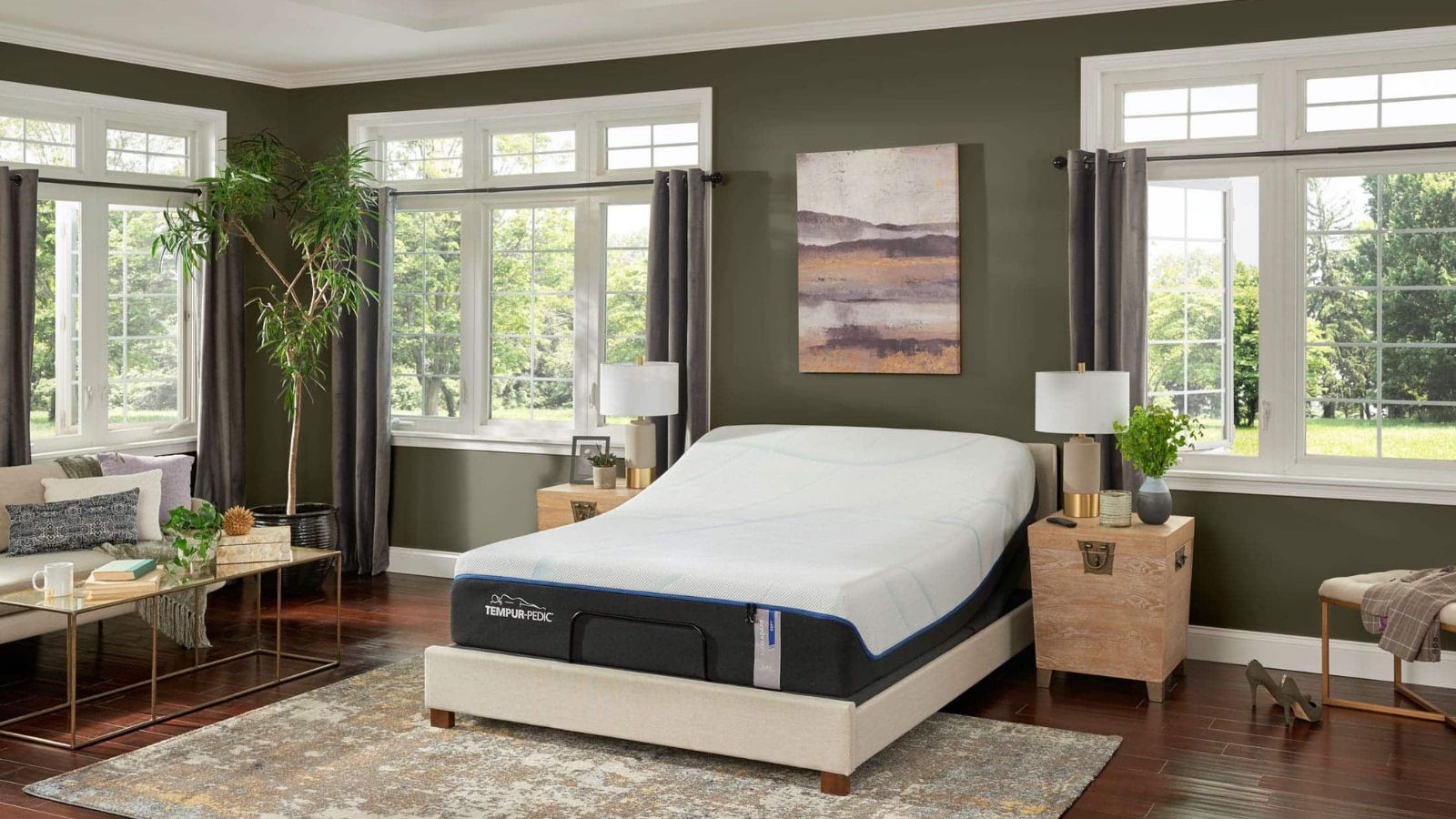

There are four major mattress types: memory foam; hybrid; latex; and innerspring. If you've ever tried shopping for a mattress, whether online or in-store, then you will have come across these terms, but you still might not know exactly what they mean.
My expert guide should tell you everything you need to know about mattress types, from how they're made to what they cost, so that you can work out which bed meets your sleep needs. I've included commentary from mattress store managers, who know what customers want; medical professionals, who know the difference a good bed can make to our sleep quality; and fellow mattress testers, who have hands-on experience with all the best beds.
I'm a shopping writer, not a salesperson. I'm not going to try and sell you a bed that won't meet your needs. That's why I've outlined the pros and cons of each mattress type, so that you can decide which bed would make the best mattress for you.
Mattress types: an expert guide
A mattress is a major investment. You should prepare to spend upwards of $600 to get a Queen-sized mattress that's worth its salt. With that said, you could always try to save a few hundred dollars in the mattress sales.
Memory foam

Best for: side sleepers and light sleepers
Pros: plush comfort and pressure relief
Cons: traps heat, less durable
Before we begin, it always helps to define our terms. A memory foam mattress is made from polyurethane, which responds to the shape, size, and temperature of each sleeper and molds to meet their needs.
Derek Hales, founder of the sleep testing platform Nap Lab, has personally sampled dozens of memory foam mattresses. He appreciates the comfort of a memory foam mattress, which 'provides deeper contour and body hug. Memory foam lowers the amount of bounce and motion transfer compared to the average mattress.' That's good news for light sleepers and anyone who shares a bed with a pet or partner: you're less likely to be disturbed by their tossing and turning.
Derek also thinks that 'side sleepers who like to sink deeper into their beds will enjoy this type of surface'. Memory foam is made to bear your weight and cushion your joints, absorbing pressure from your hips, knees, neck, and shoulders. So many of the best mattresses for side sleepers are made from memory foam.
However, I wouldn't recommend a memory foam mattress for hot sleepers: all that dense foam leaves little room for air to flow. If you're set on a memory foam mattress, but you tend to sleep hot, then you should look out for cooling gel infusions or pair your bed with the best cooling sheets.
In his decade as a mattress tester, Derek has found that 'memory foam struggles to remain supportive, especially for heavier-weighted sleepers over 250lbs. This lack of support can also exist along the edge of the mattress,' which is bad news for stomach sleepers and anyone who prefers to lie on the side of the bed. Your average memory foam mattress will only last for 6 to 8 years: then, you'll need to start your search all over again.

Derek started as a sleep product tester almost a decade ago. In that time, he's personally tested more than 320 mattresses and helped over 10 million customers make the best choice in beds.
The best memory foam mattress should feel soft, yet supportive. These are a few of our favorites, after months and years of testing. We assess each mattress against the same criteria: comfort; support; cooling properties; motion isolation; edge support; and weight bearing capacity. I'd expect a memory foam mattress to score highly for comfort, motion isolation, and weight bearing capacity, but fall down on the cooling count.

I assigned one of our expert testers, Casey, to review the Nectar Memory Foam Mattress. Casey suffers from fibromyalgia, and often wakes up in pain, but she found that the Nectar Memory Foam Mattress cushioned her joints, relieved pressure, and eased her aches.
You can find more detail in our Nectar Memory Foam Mattress review.
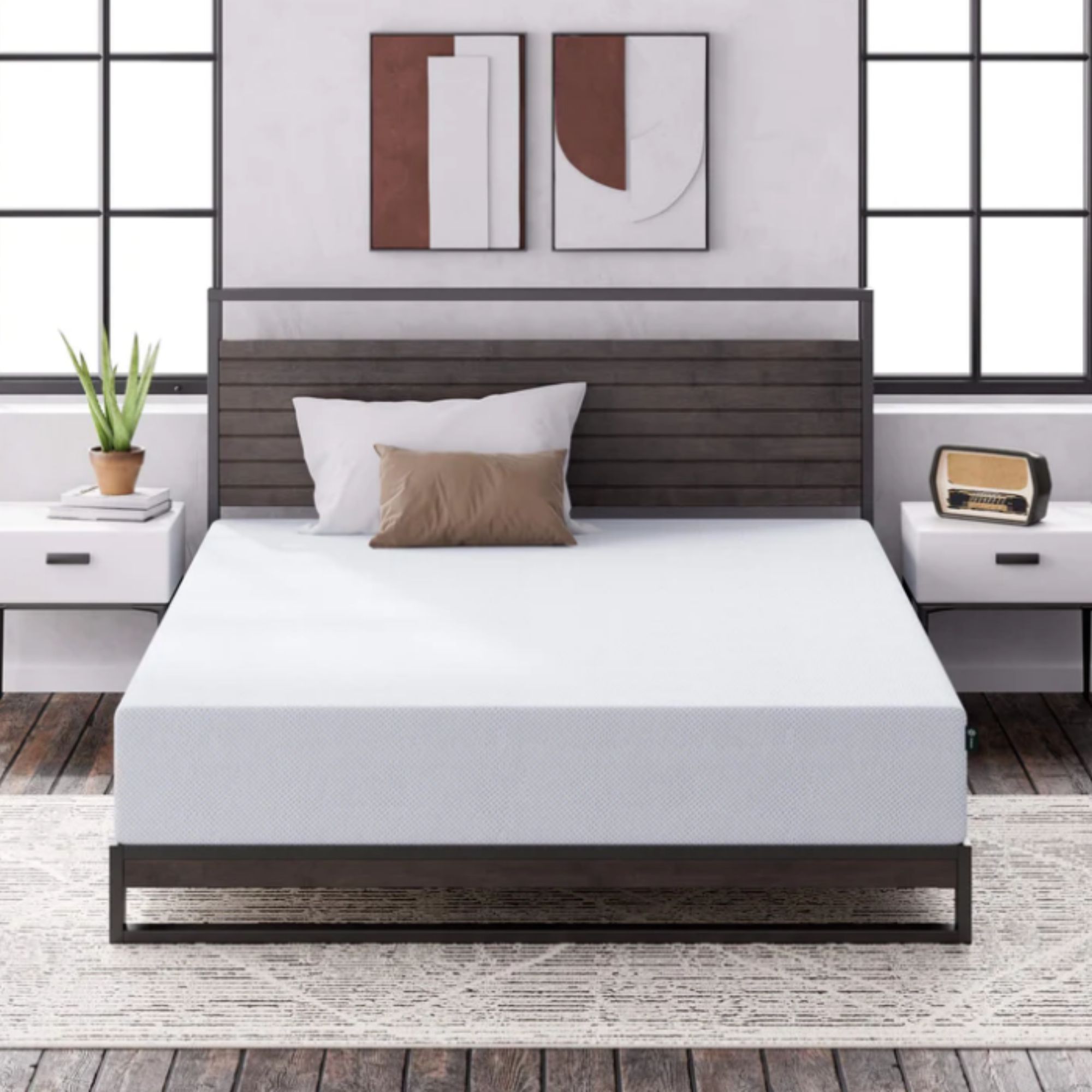
This memory foam model is one of the best cooling mattresses on the market. All that thick foam is infused with cooling copper and green tea to block odors, dissipate heat, and wick moisture. That's why the Zinus Cooling Gel Mattress is suitable for hot sleepers and summer nights.
You can find more detail in our Zinus Cooling Gel Mattress review.
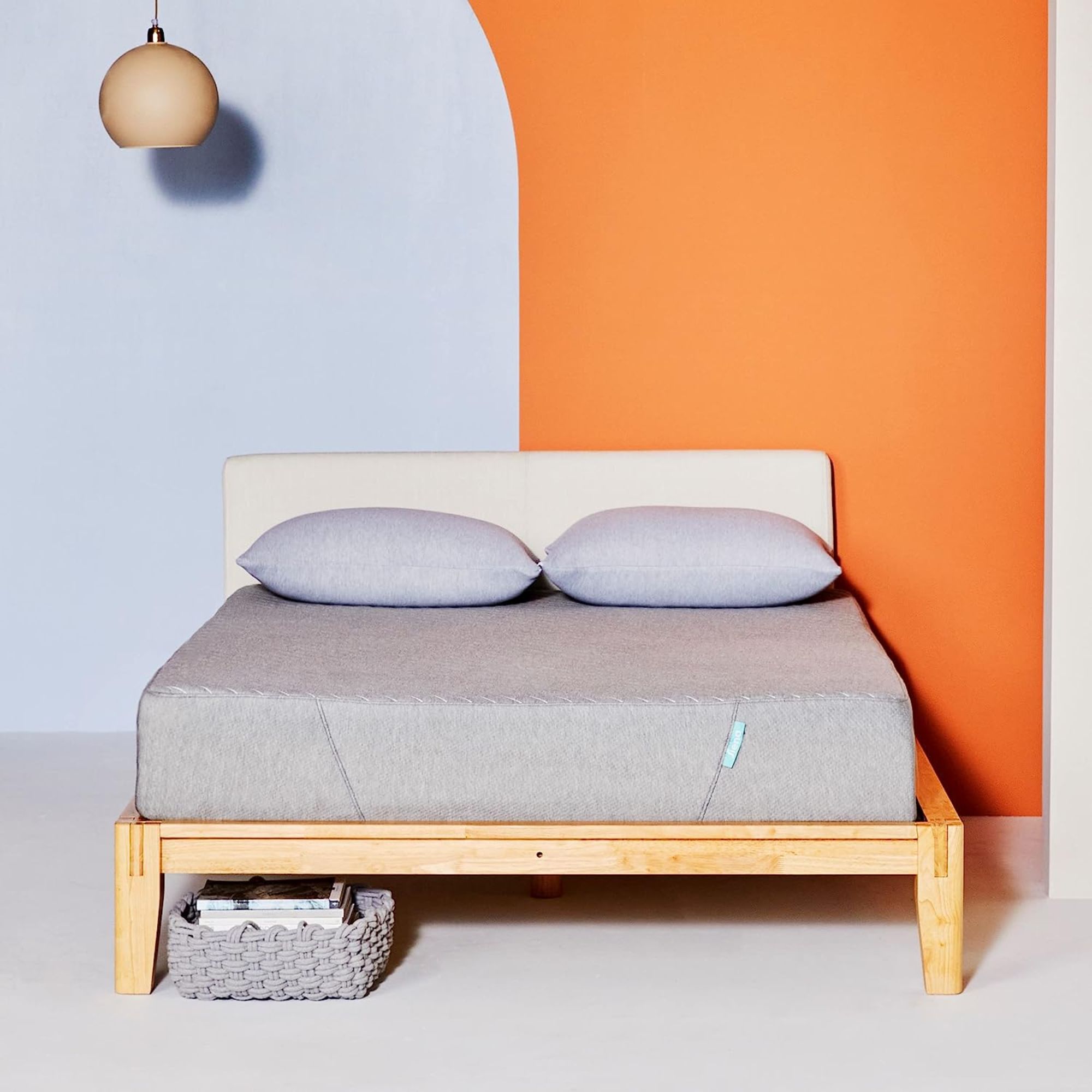
The Siena Memory Foam Mattress offers great support for stomach sleepers and excellent motion isolation for just $399 for a Queen. That's about as low as I'd spend on a mattress and still expect to get a decent bed at the end of it.
You can find more detail in our Siena Memory Foam Mattress review.
Hybrid
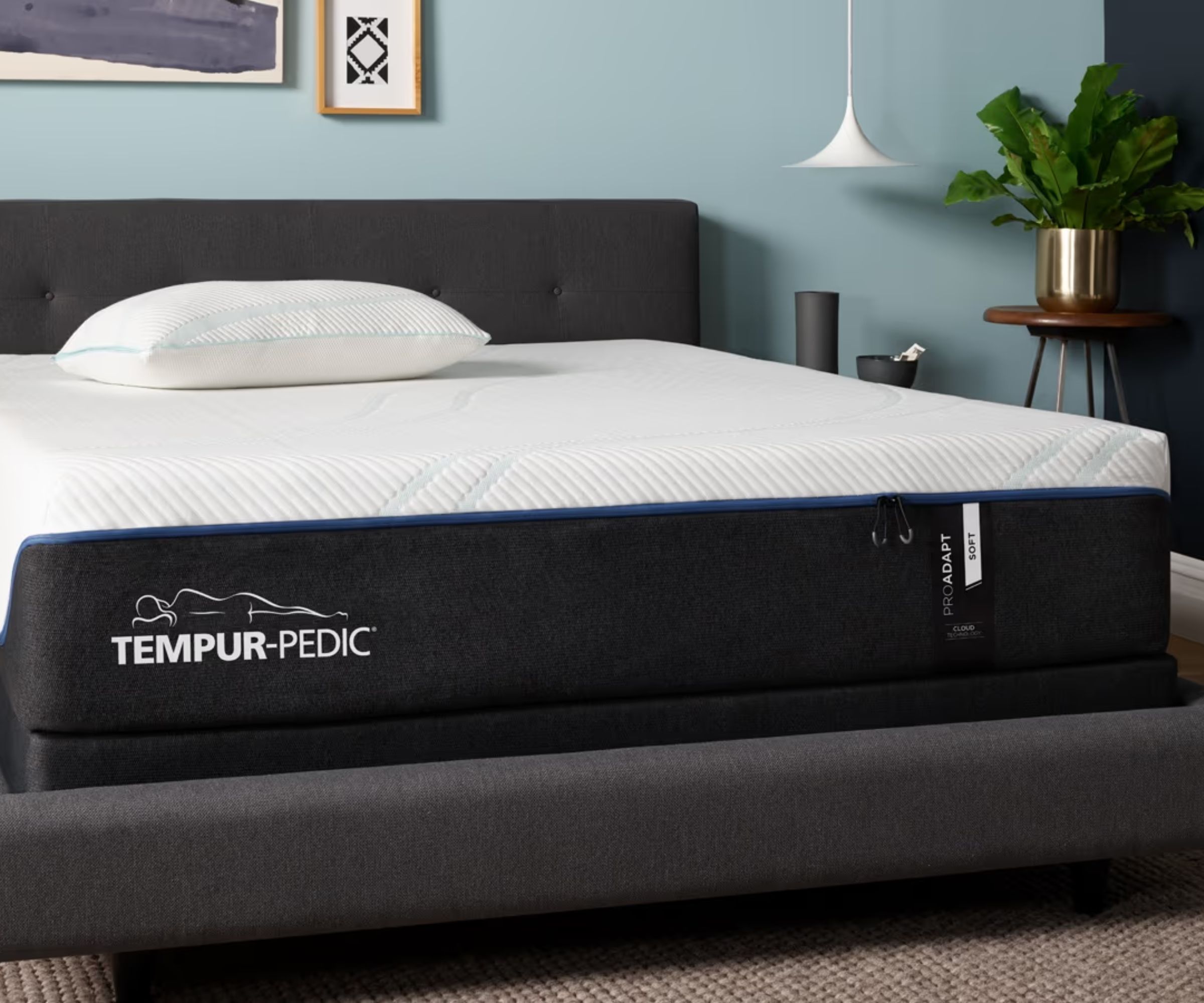
Best for: hot sleepers and anyone who suffers from chronic pain
Pros: breathable and supportive
Cons: expensive and heavy
A hybrid mattress is a composite of a classic innerspring and modern memory foam. You get all the plush comfort of thick foam, with the enhanced airflow and support of innerspring coils.
As a licensed chiropractor, Dr. Brent Wells understands the impact of a hybrid mattress on our spinal alignment, as well as our sleep quality. He would recommend a hybrid mattress 'for individuals with back pain, as it provides adequate spinal support while offering cushioning to relieve pressure points'.
'The zoned support offered by many hybrid mattresses helps to maintain proper spinal alignment,' explains Dr. Brent. 'This feature is crucial for individuals suffering from conditions like herniated discs, sciatica, and chronic lower back pain, as it helps reduce strain on the spine and promotes better sleep posture'. That's why hybrid mattresses are better for back pain than your average foam mattress.
When it comes to cooling, there's no contest between hybrid vs memory foam mattresses. 'Hybrid mattresses generally have better airflow due to the presence of innerspring coils,' says Dr. Brent. That'll be those innerspring coils, which boost breathability as they compress and depress beneath your body weight. Dr. Brent says that 'improved thermoregulation can enhance sleep quality and aid musculoskeletal recovery.'
If you're in the market for a hybrid mattress, Dr. Brent urges you to pay extra attention to the firmness of your bed, which 'can vary significantly between brands and models. An ill-suited firmness level can cause discomfort, potentially exacerbating back and neck pain rather than alleviating it.' It might be worth learning how to test a mattress in-person or taking advantage of a mattress sleep trial to assess comfort and support at home.

Dr. Brent is a trained chiropractor and founder of Better Health Anchorage. Over the past 20 years, he has treated more than 20,000 patients, and knows the difference that a good mattress can make to your health and wellbeing.
One practical point: hybrid mattresses are heavy. The combined weight of thick foam and steel coils might prove too much to maneuver if you live alone. Still, you'll only need to flip or rotate your mattress once every couple of years. It's not worth missing out on some of the best beds on the market.
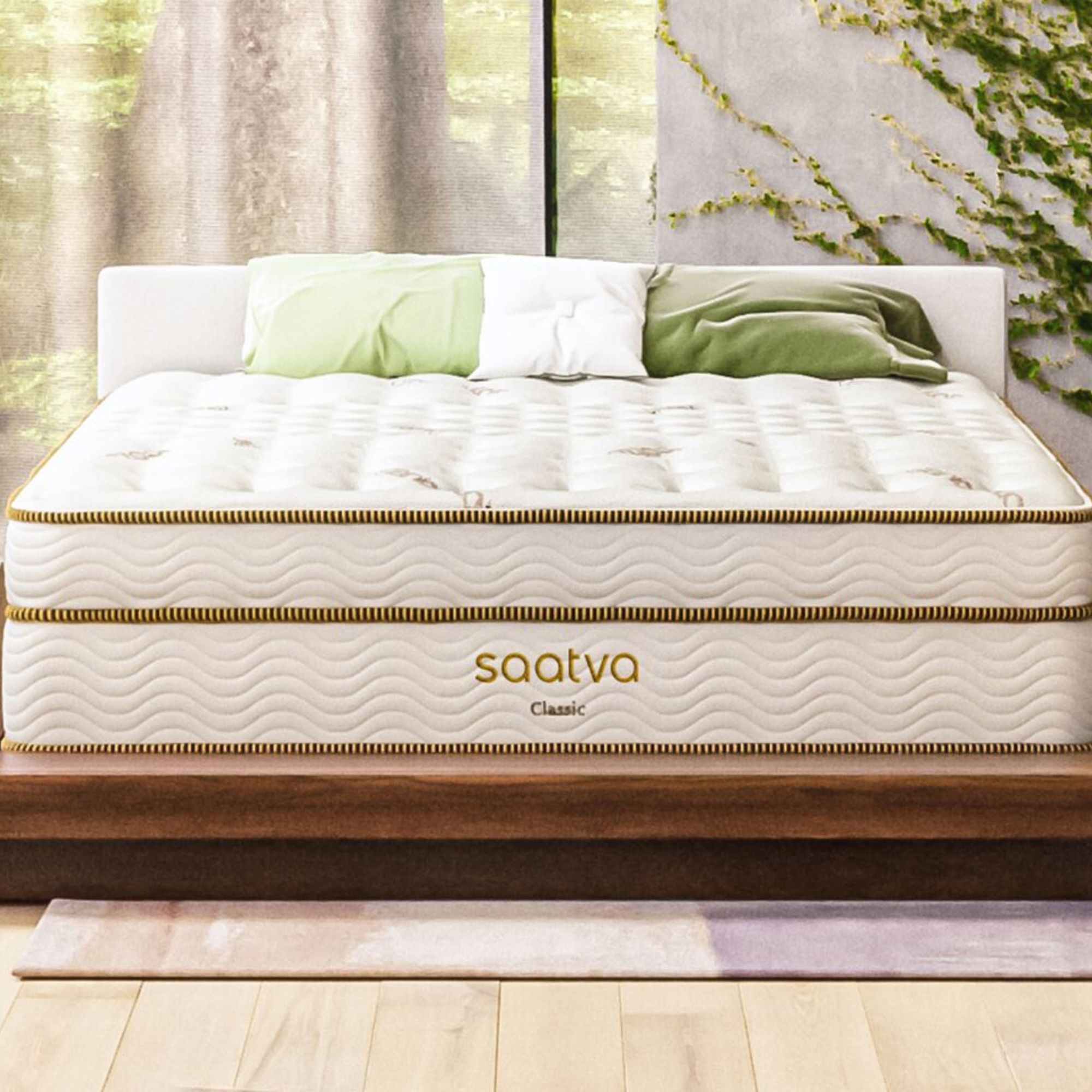
The Saatva Classic Mattress is our reigning champion for best mattress. For cooling comfort and edge support, you won't find anything better at this price. Don't take my word for it: take advantage of Saatva's 365-night sleep trial and try for yourself.
You can find more detail in our Saatva Classic Mattress review.
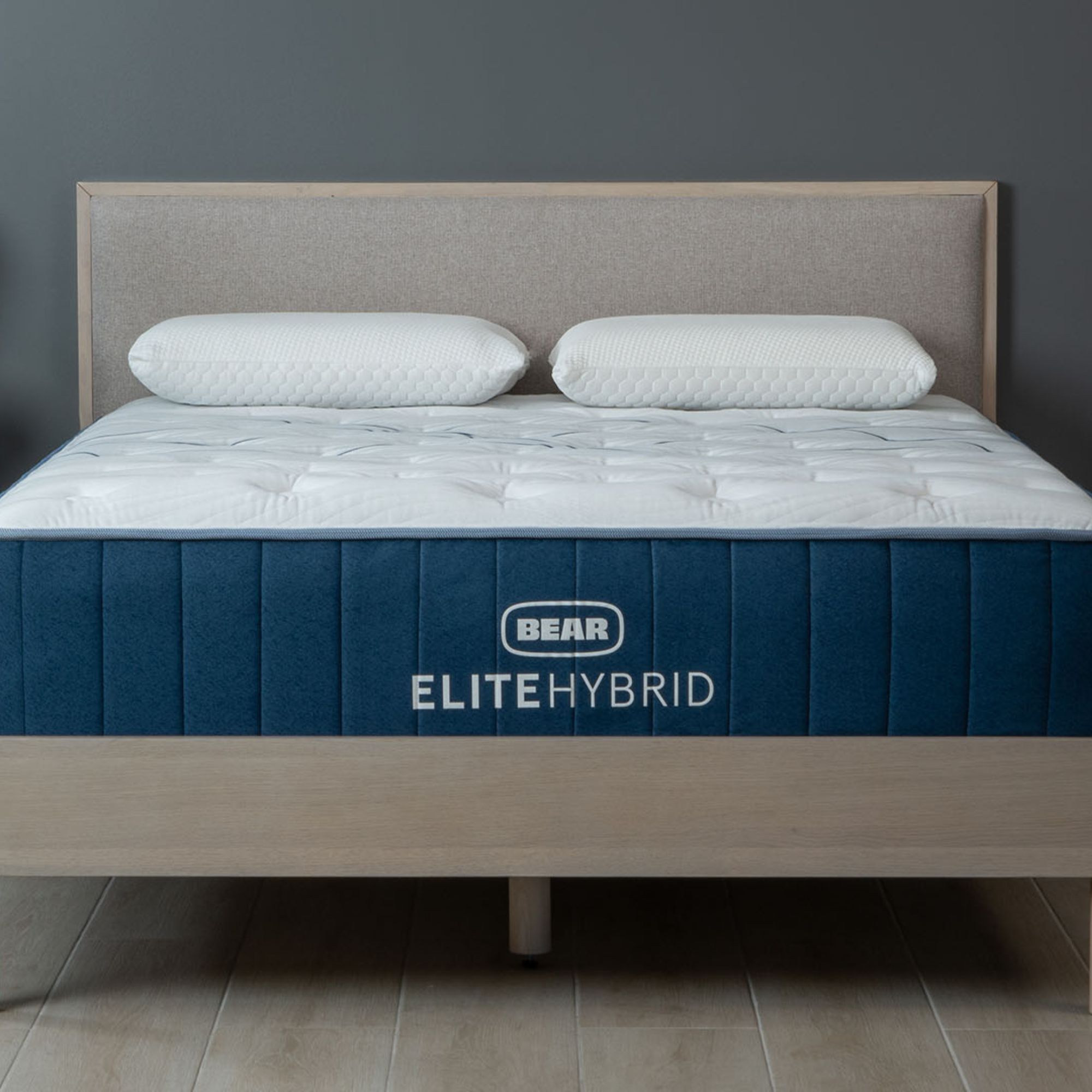
The Bear Elite Hybrid Mattress is relatively new on the scene, but it's already a regular in our mattress round-ups. The Medium comfort level should suit all sleepers and offer especial support to side sleepers around their hips, knees, necks, and shoulders.
You can find more detail in our Bear Elite Hybrid Mattress review.
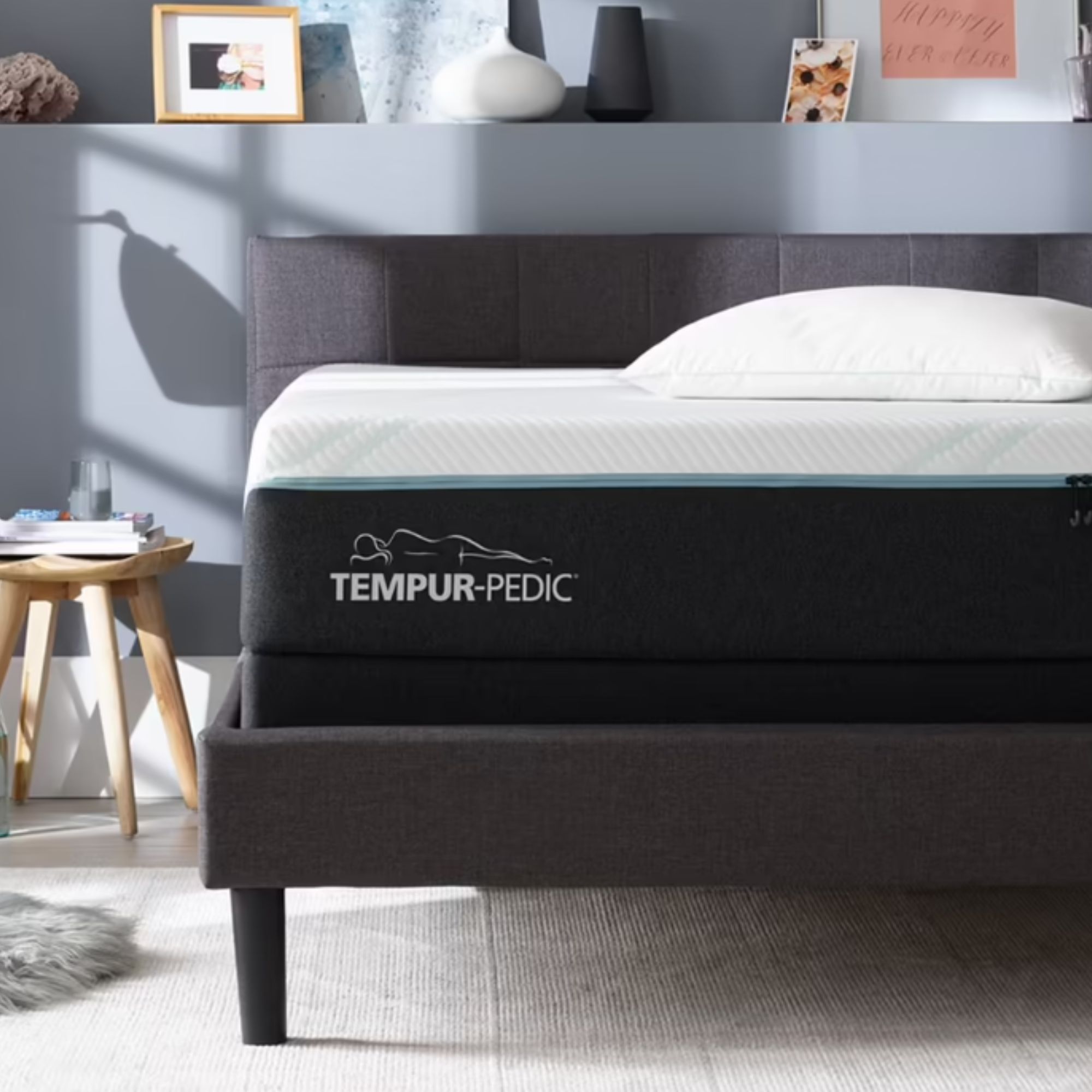
Like a lot of hybrid mattresses, the Tempur-Pedic ProAdapt is seriously expensive: we're talking more than $3,000 for a Queen. Still, I'd argue that you get what you pay for: outstanding motion isolation, active cooling, and excellent weight bearing capacity.
You can find more detail in our Tempur-Pedic ProAdapt Medium Hybrid Mattress review.
Latex
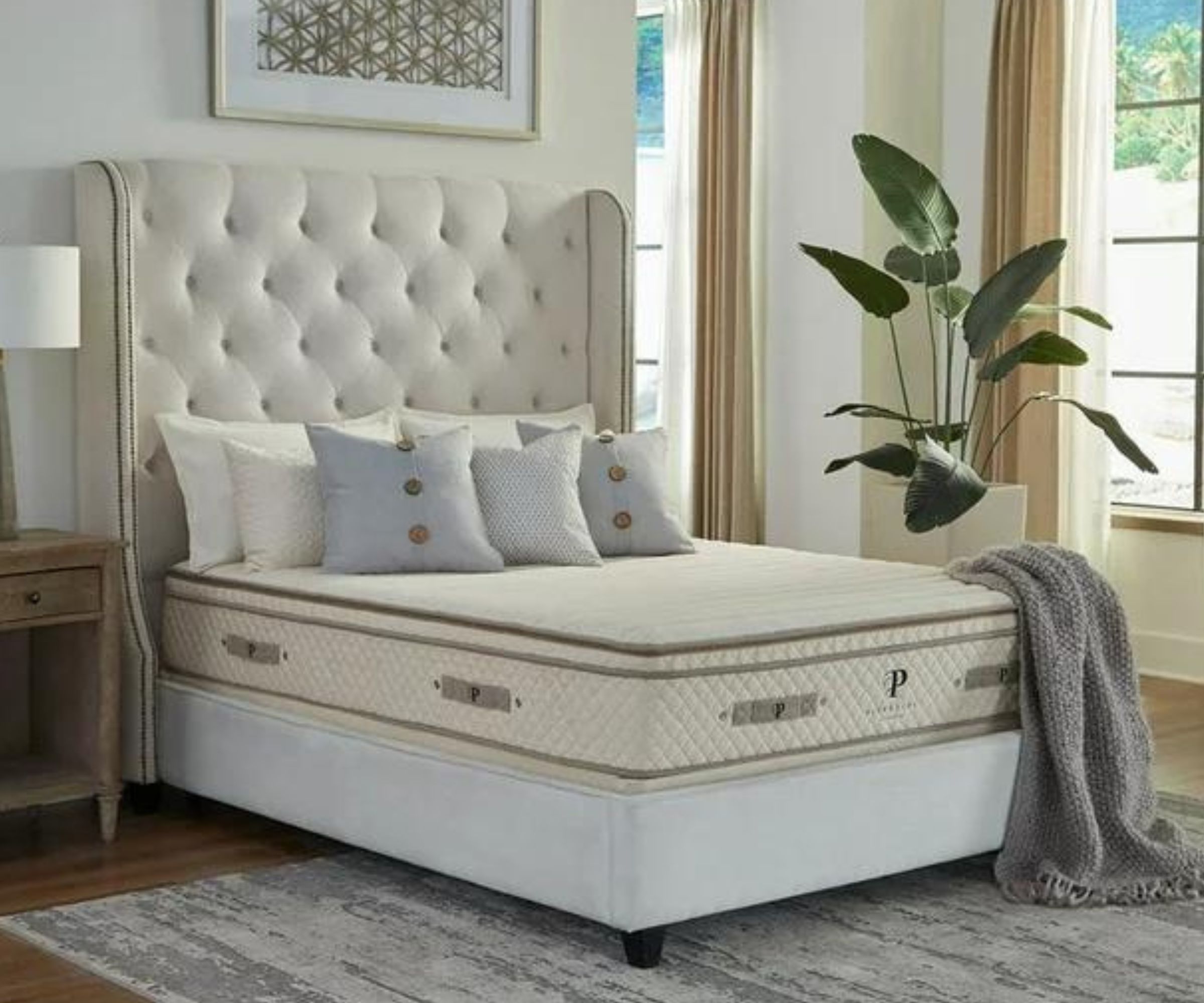
Best for: eco-conscious shoppers
Pros: breathable, durable, sustainable
Cons: expensive and heavy
If you're keen to shop sustainably, then you should consider a latex mattress. 'Latex mattresses are made from natural rubber, which is biodegradable and a more sustainable option,' explains Andy Bloom, long-time mattress salesman and owner of the Home Mattress Center in Wilmington, Delaware.
Almost all of the best organic mattress contenders are made from latex. As mattress materials go, latex is highly breathable, springy and responsive, made to bear your weight then spring right back into shape. I'd recommend a latex mattress for hot sleepers and anyone who prefers a firmer surface to maintain proper spinal alignment (looking at you, back and stomach sleepers).
'Another pro of latex mattresses is that they are highly durable and can last significantly longer than other mattresses without losing shape or comfort,' says Andy. When you compare latex vs memory foam mattresses, latex beds are almost four times more durable: we're talking a 20-year lifespan as opposed to six years.
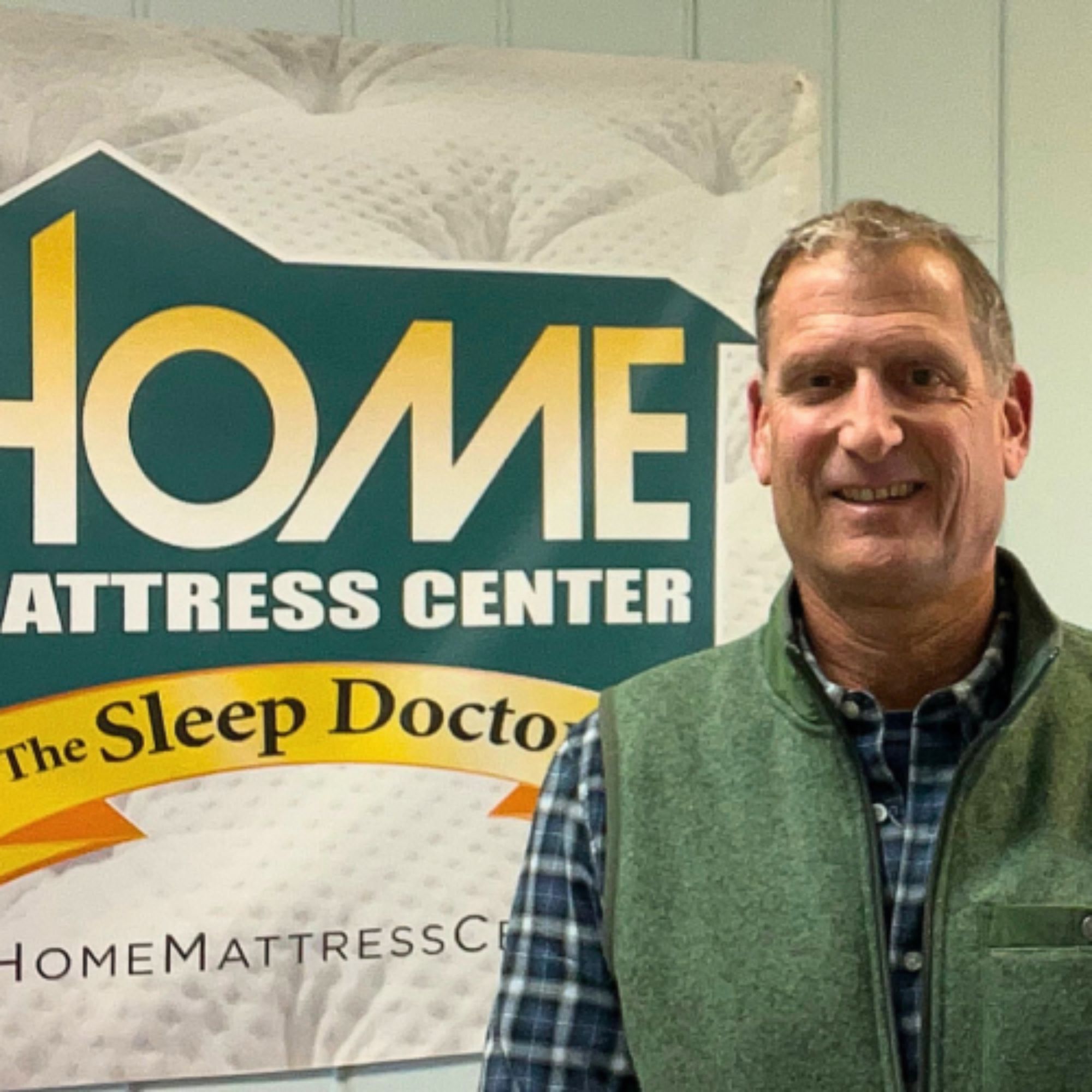
Andy runs the Home Mattress Center in Wilmington, Delaware. His family has been in the mattress business for generations and he has personally sold thousands of latex beds.
Andy also notes that 'latex mattresses have a higher price tag than other mattresses'. If you're buying on a budget, you should narrow your search to the best affordable mattress or wait for a deep discount in the mattress sales.
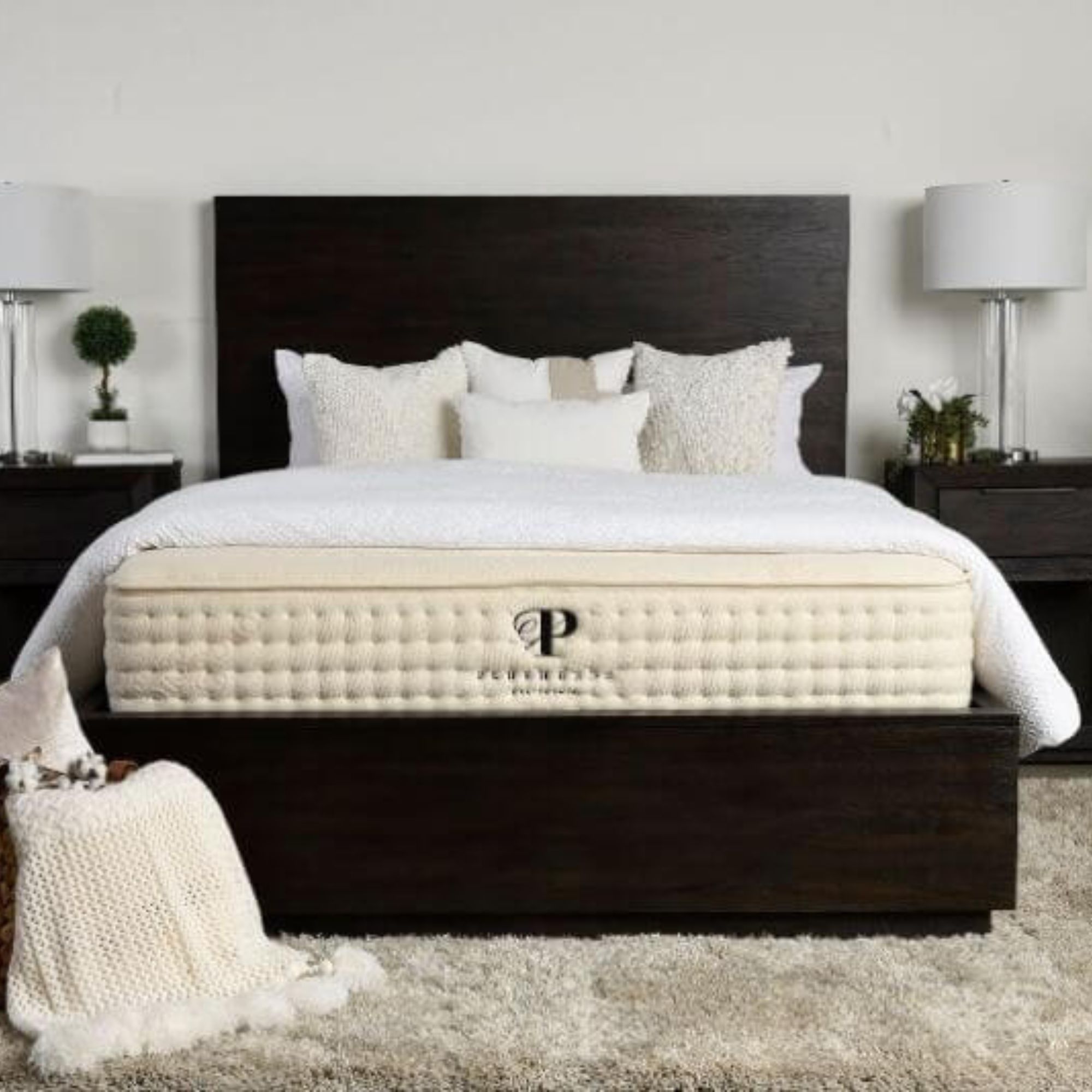
When you purchase from PlushBeds, you get to design your dream mattress. You can choose your ideal firmness, height, and size from all the standard options, as well as Split sizes to suit couples who share a bed, but not a sleep style.
You can find more detail in our PlushBeds Botanical Bliss Organic Latex Mattress review.
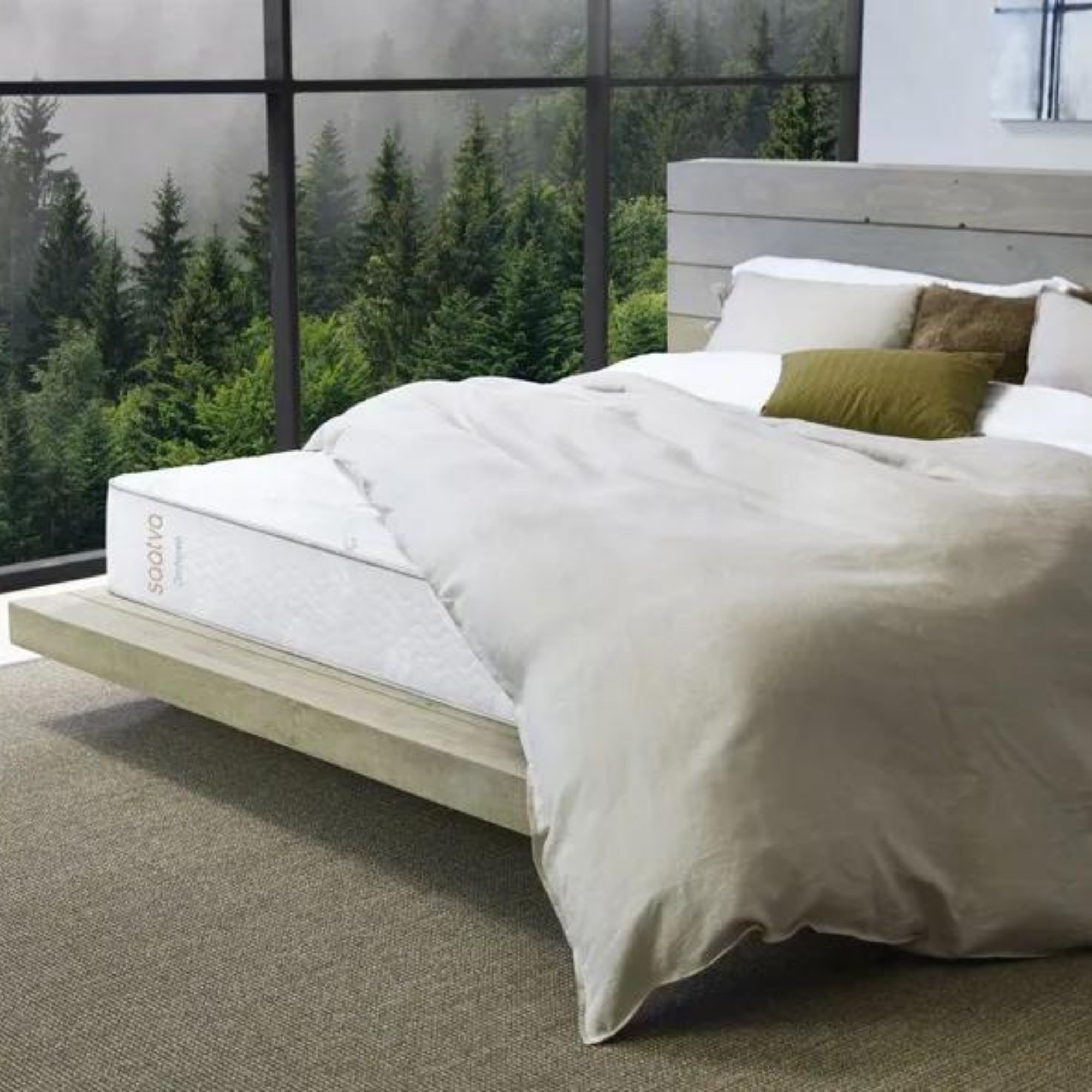
Our expert tester, Jill, slept on the Saatva Zenhaven Natural Latex Mattress through two heatwaves in Bucks County, Pennsylvania. As soon as she stepped out of the house, she was sweating, but she kept cool and fresh overnight with this breathable latex bed.
You can find more detail in our Saatva Zenhaven Natural Latex Mattress review.
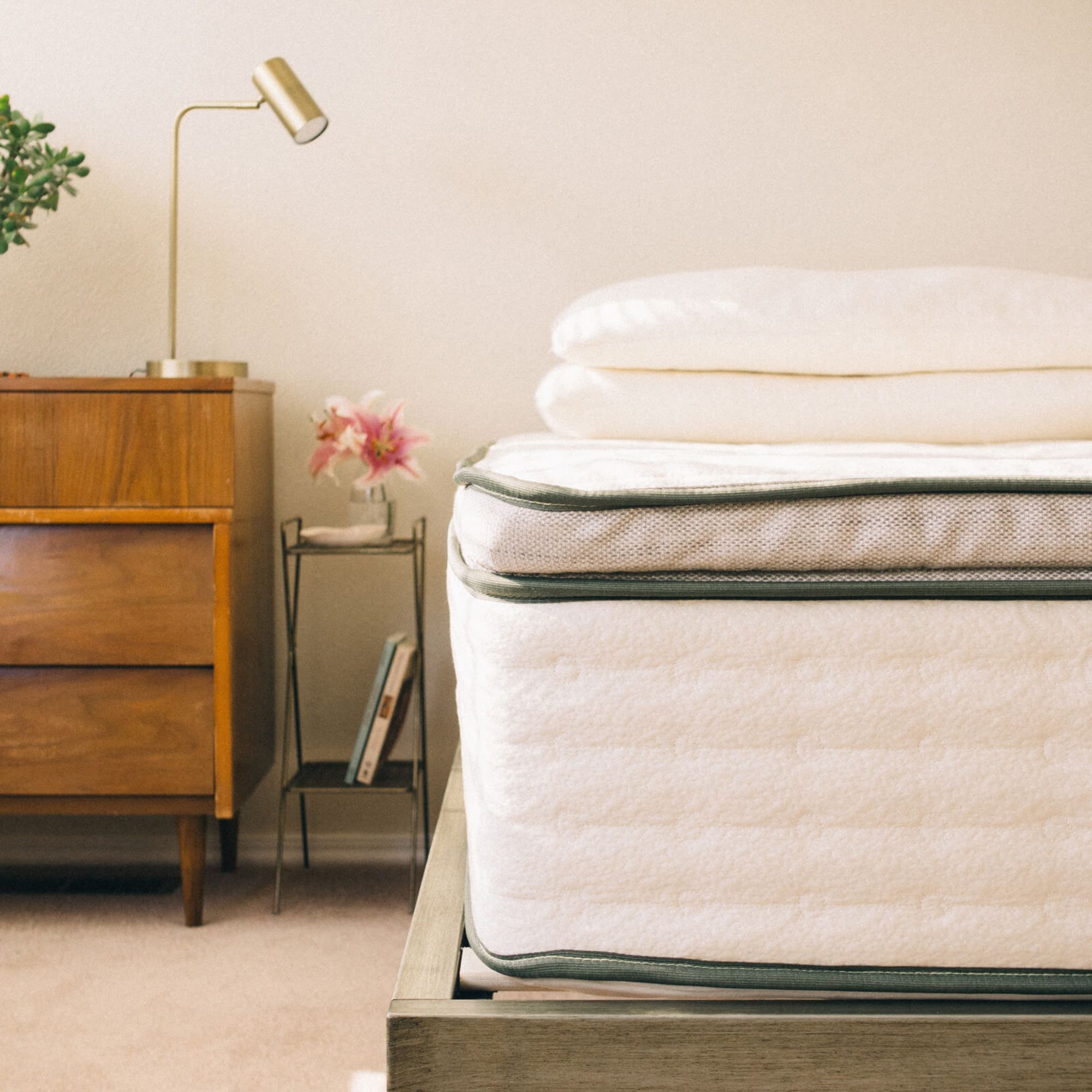
The Avocado Green Mattress features two types of latex: Dunlop on the bottom for a supportive base, then Talalay up top for boosted breathability. You'll also find organic cotton and organic wool to soften things up and enhance thermoregulation.
You can find more detail in our Avocado Green Organic Latex Mattress review.
Innerspring

Best for: firm support
Pros: breathable and pressure-relieving
Cons: prone to motion transfer
Your average American home still has at least one innerspring mattress. These traditional models still have a lot to offer in this day and age − the best firm mattress is an innerspring.
According to Drew Miller, VP of Marketing at Sit'n'Sleep mattress stores, 'innerspring mattresses offer similar support and relief as hybrid mattresses.' If anything, an innerspring is more breathable than a hybrid bed, since there isn't any foam to interrupt the airflow. 'However, even the best innerspring mattress won't have the additional pressure-relieving benefits of memory foam.'
There are two types of innersprings: those with individually wrapped coils and those without. Drew prefers closed coils, 'which reduce the amount of motion transferred throughout the bed,' so that you can sleep undisturbed with a pet or partner. 'Open coils,' by contrast, 'transfer more motion and tend to wear more quickly.'
An innerspring isn't fashionable, but Derek thinks it's a great choice 'for those who suffer from back pain or need a firm level of support. Depending on the quality of the mattress, innersprings may be more prone to sagging, as well as wear and tear.'

Drew manages the marketing for Sit'n'Sleep, one of the largest mattress retailers in Southern California. He started as a sleep consultant in store, where he learned just what people want from their beds and how to give it to them.
You'd be hard-pressed to find a true innerspring in a specialist sleep store. Your best bet is the Naturepedic Chorus: it's made from entirely organic materials and offers medium-firm support to suit back and stomach sleepers.
Mattress types FAQs
Which are the best mattress types?
Which mattress type is best all depends on your sleep style: that's a catch-all term that covers your sleep position (how you lie on a bed); your sleep temperature (whether you run hot or cold); and your sleep circumstance (whether you suffer from chronic pain, for example, or whether you're particularly stressed).
Hot sleepers need a cooling mattress, front sleepers need a firmer mattress, and so on. For more information about how to choose a mattress, consult our expert guide.
Which are the most common mattress types?
Right now, the mattress market is saturated with memory foam models, and it's not hard to see why: they're comfortable, convenient, and cost-effective. If you asked around your neighborhood, though, you'd likely find that most people still own an innerspring mattress. An innerspring might not feel quite as comfortable as a memory foam mattress, but it's breathable and durable: you could sleep on it for a decade or more.
Final thoughts
Once you've bought the best bed, it's important to take good care of it. One of the best mattress protectors should keep you safe from spills and stains and it will only set you back a hundred dollars or so.
If you'd love a new bed, but you just can't afford it, then you could always get one of the best mattress toppers, instead. That way, you can transform the look and feel of your bed for a fraction of the price of a new mattress.
Sign up to the Homes & Gardens newsletter
Design expertise in your inbox – from inspiring decorating ideas and beautiful celebrity homes to practical gardening advice and shopping round-ups.

Emilia is our resident sleep writer. She spends her days tracking down the lowest prices on the best mattresses and bedding and spends her nights testing them out from the comfort of her own home. Emilia leads a team of testers across America to find the best mattress for every sleep style, body type, and budget.
Emilia's quest to learn how to sleep better takes her all around the world, from the 3Z mattress factory in Glendale, Arizona to the Hästens headquarters in Köping, Sweden. She's interviewed luxury bedding designers at Shleep and Pure Parima, as well as the Design Manager at IKEA. Before she joined Homes & Gardens, Emilia studied English at the University of Oxford.
-
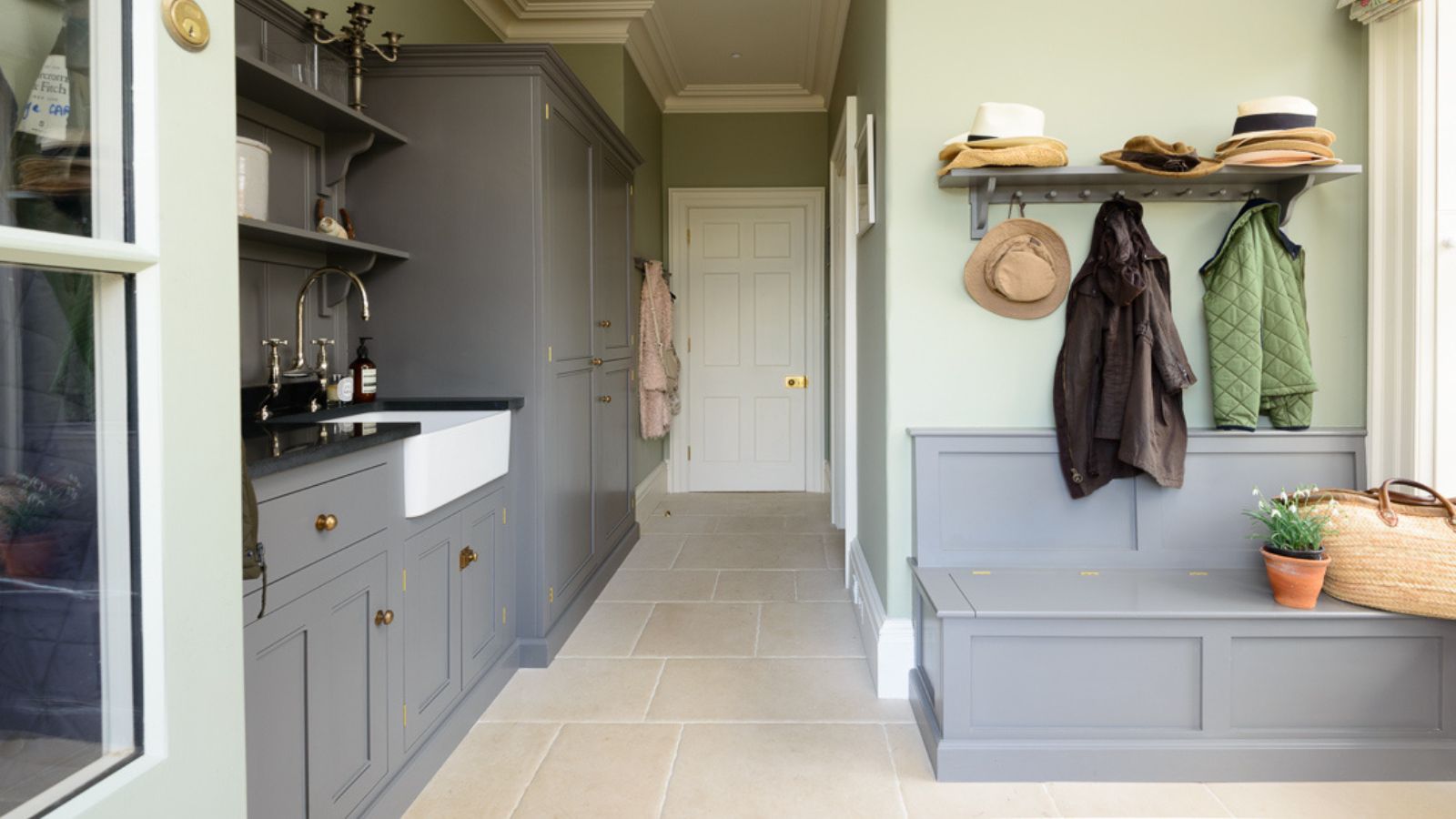 I've spent 200+ hours testing vacuums and tried the viral tea bag vacuum hack to deodorize naturally. The results surprised me
I've spent 200+ hours testing vacuums and tried the viral tea bag vacuum hack to deodorize naturally. The results surprised meIt worked better than I expected, but it's not the most effective method out there
By Dan Fauzi
-
 Martha Stewart's outdoor zoning method is the secret to seamless hosting for summer 2025 – it's changed how I arrange furniture on my patio
Martha Stewart's outdoor zoning method is the secret to seamless hosting for summer 2025 – it's changed how I arrange furniture on my patio11 years ago, Martha shared an intelligent way to organize your outdoor space for hosting season – it's just as smart over a decade later
By Megan Slack
-
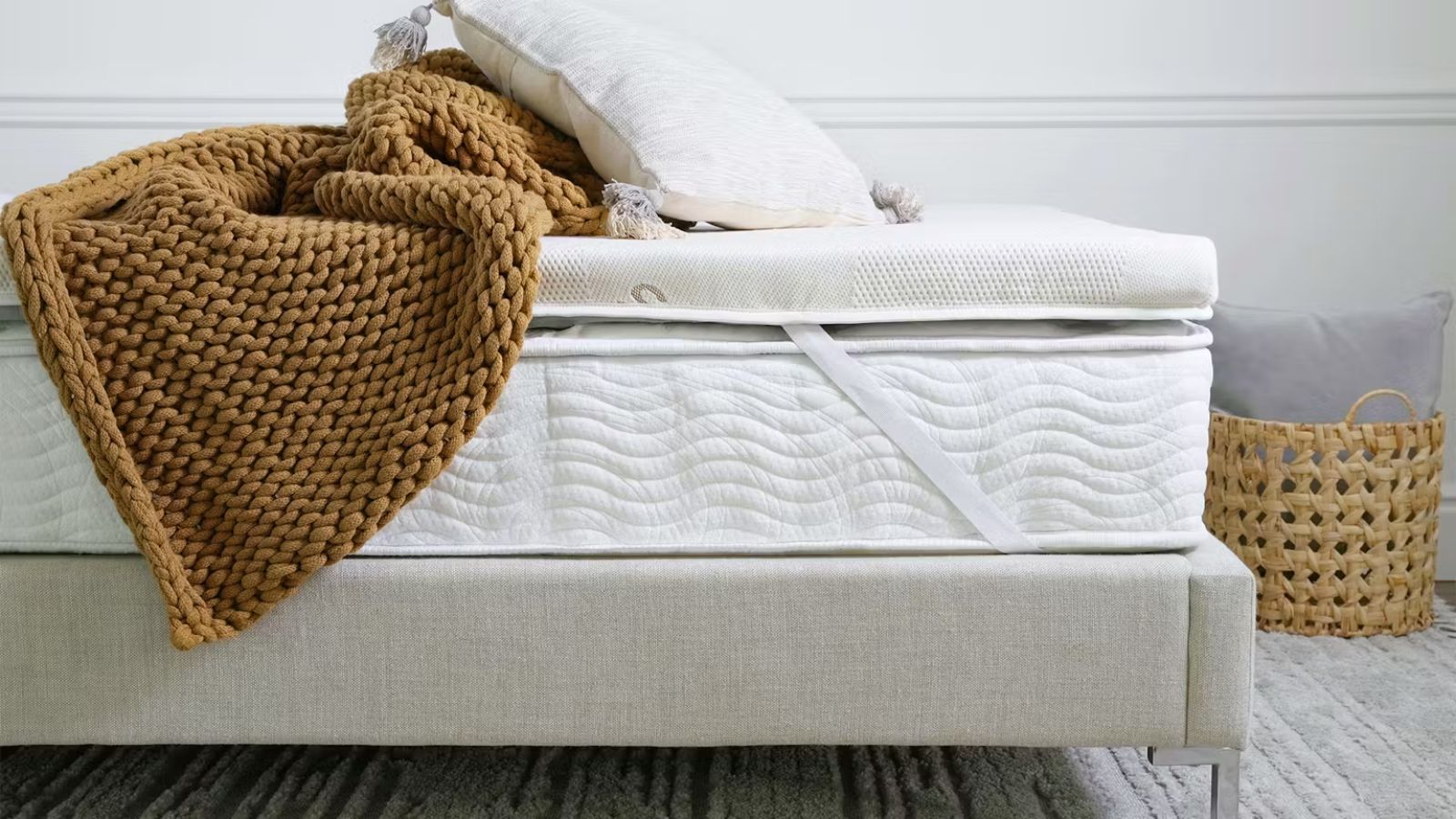 How we test mattress toppers – H&G's expert review process explained
How we test mattress toppers – H&G's expert review process explainedHere's everything you need to know how we test mattress toppers for pressure relief, thermoregulation, motion isolation, and edge support
By Emilia Hitching
-
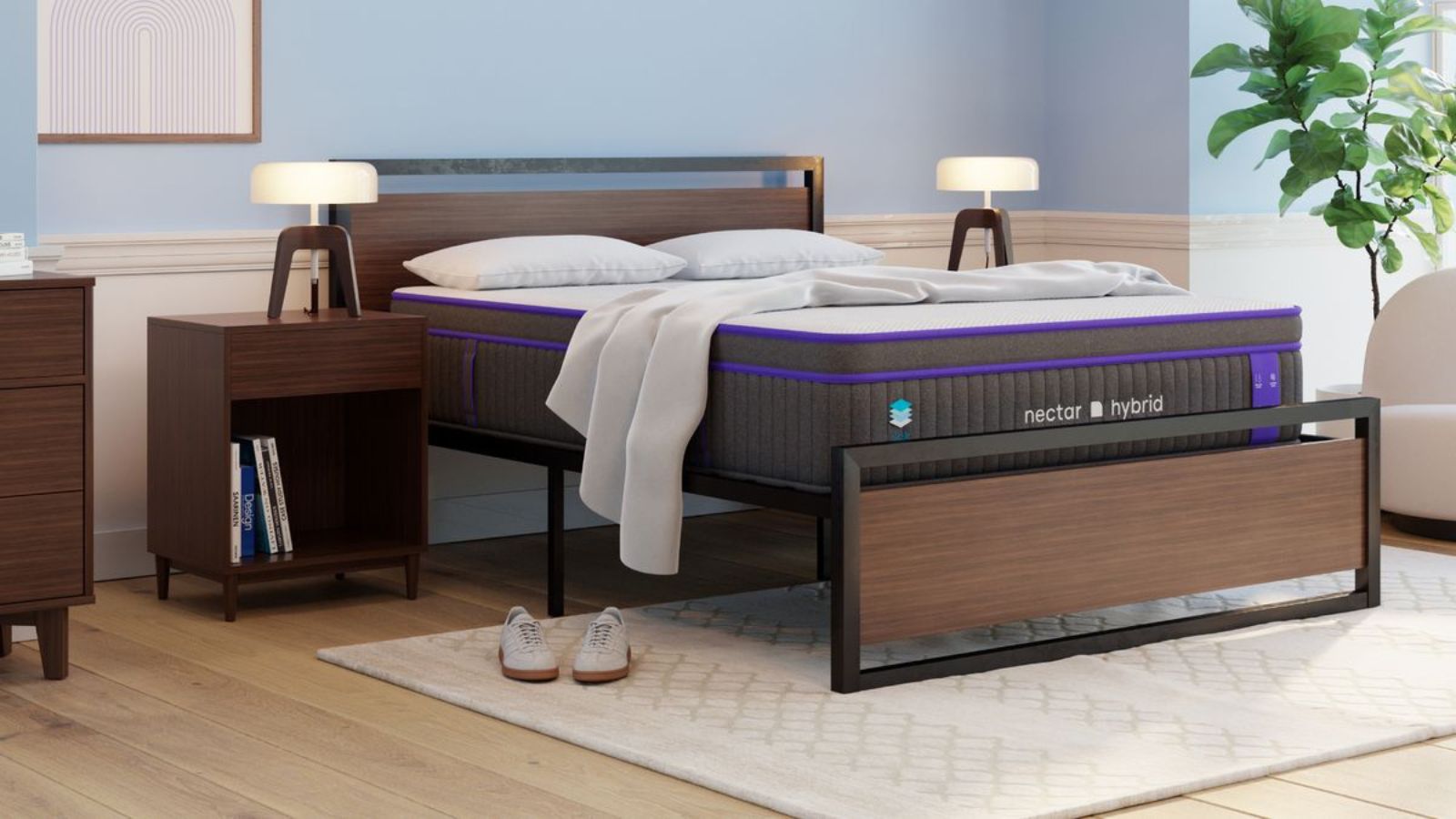 I tried the Nectar Premier Hybrid Mattress – it's so much better than their basic models
I tried the Nectar Premier Hybrid Mattress – it's so much better than their basic modelsCompared to the Nectar Classic Foam Mattress, the Nectar Premier Hybrid boasts far superior edge support and thermoregulation
By Millie Hurst
-
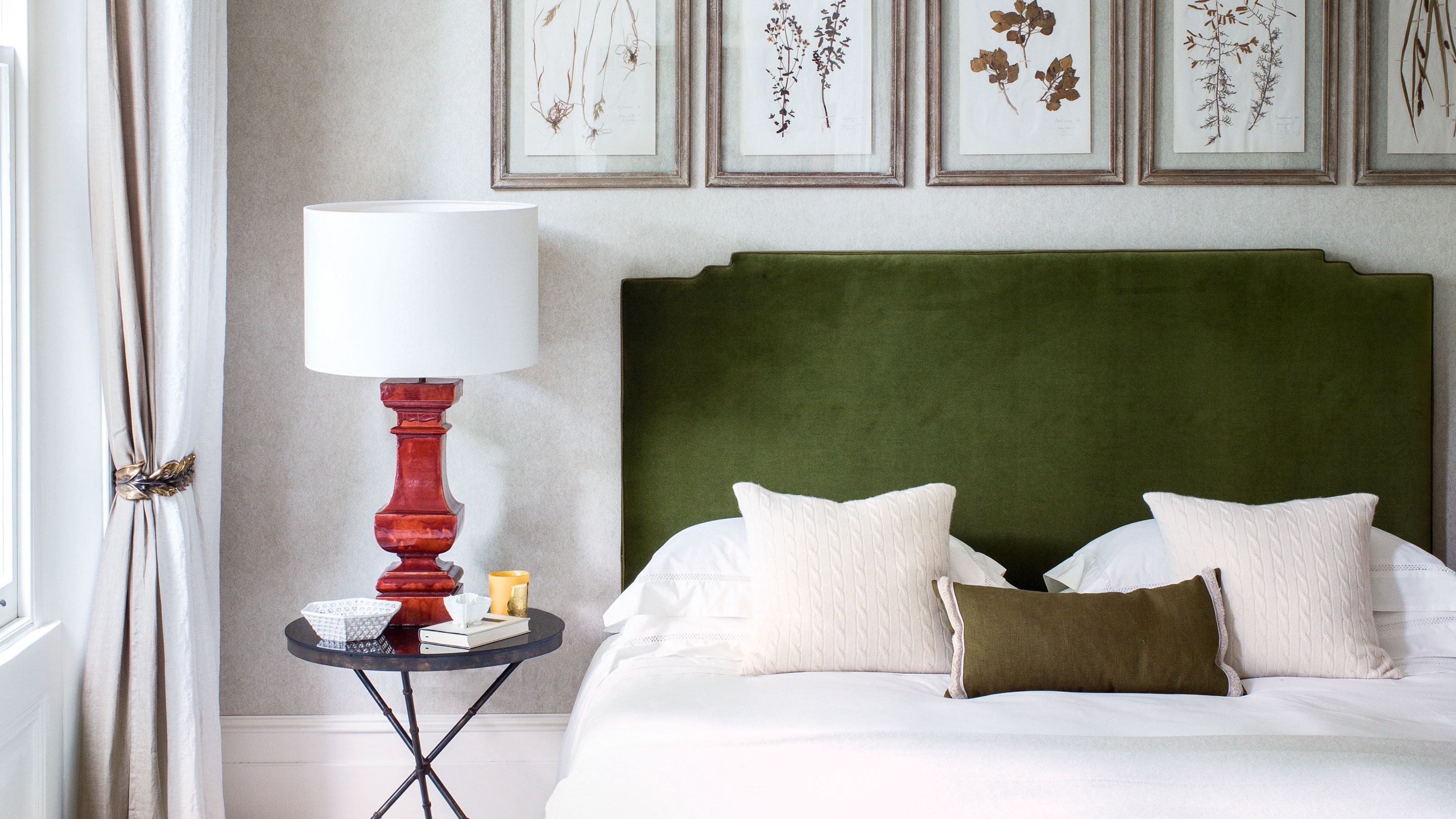 What's the best pillow position for the best night's sleep? Sleep experts weigh in
What's the best pillow position for the best night's sleep? Sleep experts weigh inBecause sometimes it's the small things that can have a big impact on your sleep quality
By Michele Ross
-
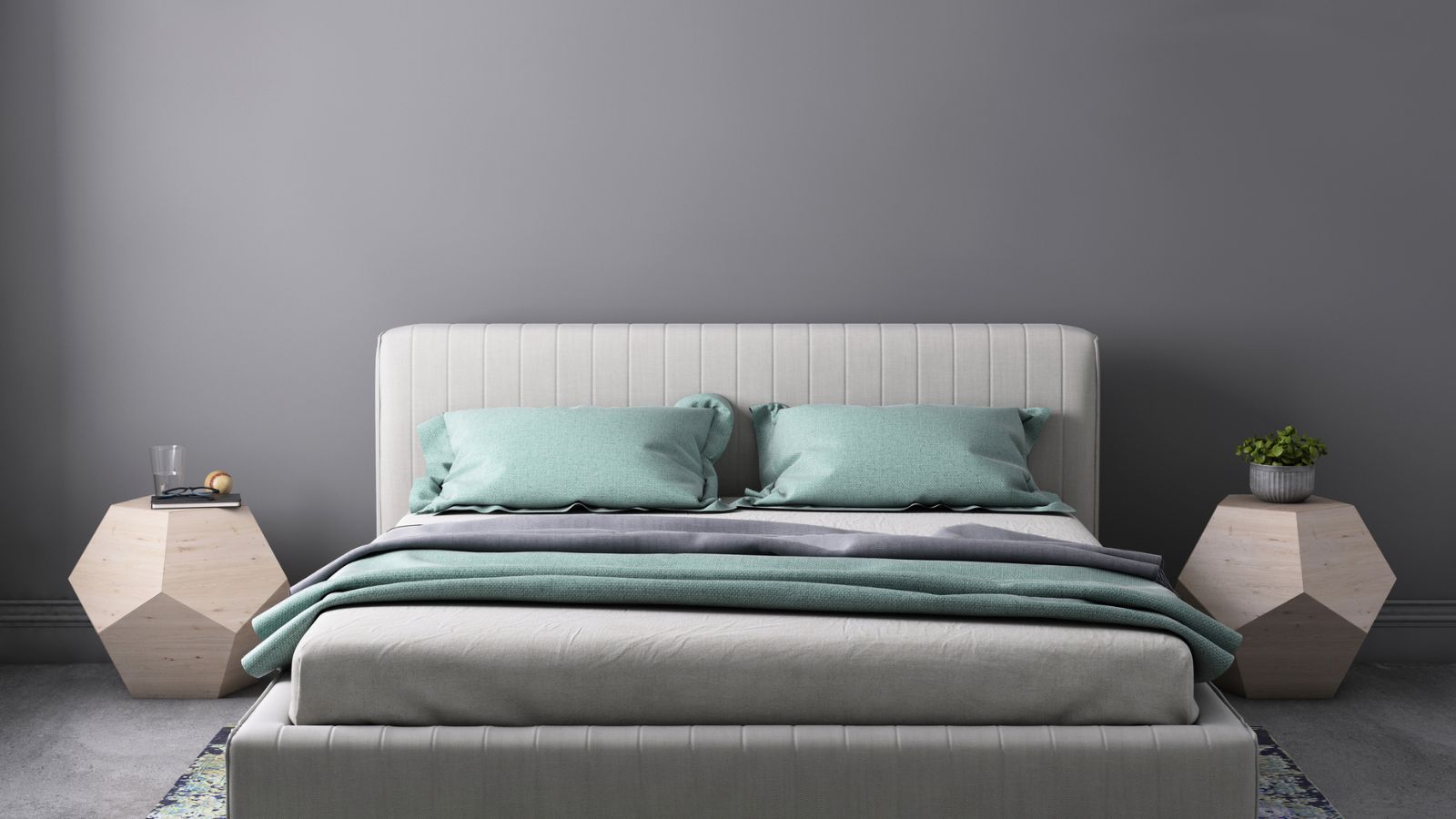 5 signs you're sleeping on a bad mattress − how to spot the red flags
5 signs you're sleeping on a bad mattress − how to spot the red flagsI asked medical professionals and sleep scientists how to spot the signs you're sleeping on a bad mattress and when it's time to upgrade
By Emilia Hitching
-
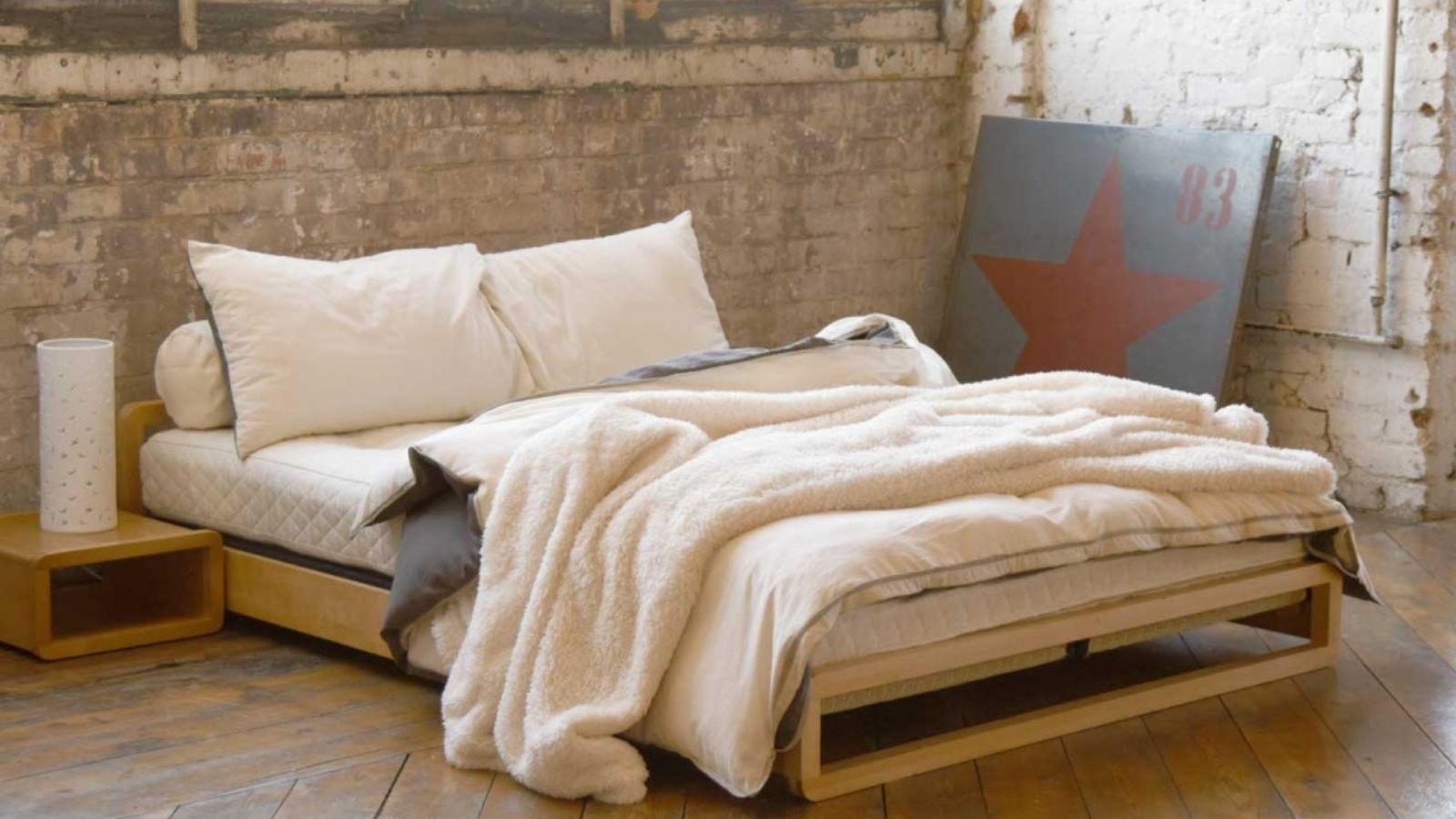 What is a futon mattress? Your expert guide
What is a futon mattress? Your expert guideFor flexible comfort and short-term stays, there's nothing like a futon mattress − I've searched the web to bring you the best fold-out beds
By Emilia Hitching
-
 Platform bed vs box spring – what's the difference and which is best for you?
Platform bed vs box spring – what's the difference and which is best for you?Unsure whether a platform bed or a box spring is right for your set up? We break down these two mattress foundation options
By Alison Barretta
-
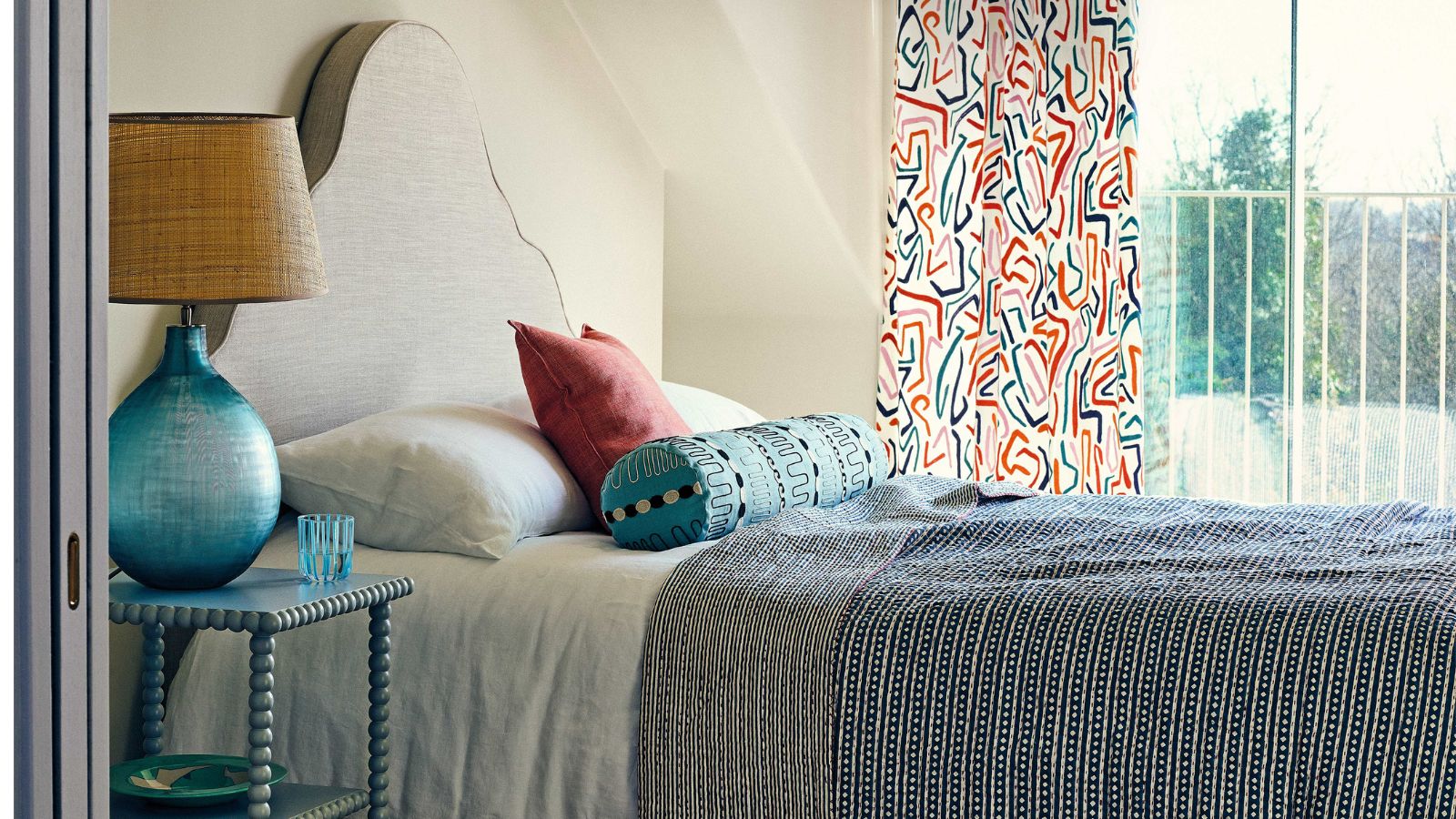 What is a platform bed? Everything you need to know about this stylish mattress support
What is a platform bed? Everything you need to know about this stylish mattress supportLearn how this low profile bed frame can elevate the look of your bedroom
By Alison Barretta
-
 How long do memory foam mattresses last?
How long do memory foam mattresses last?I spoke to mattress testers and medical professionals to learn more about the lifespan of a memory foam mattress – plus, how to extend it
By Emilia Hitching